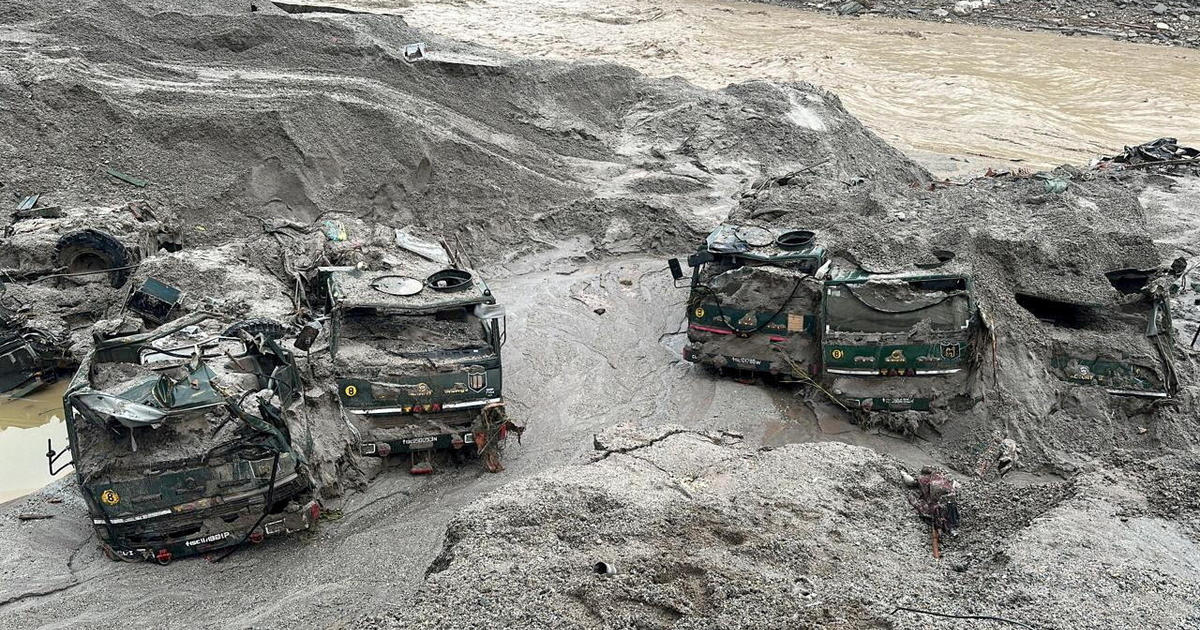Valley fever fungus spreading in California fueled by climate change
California researchers are scrutinizing the spread of a fungus that causes debilitating Valley fever, now being exacerbated by climate change.
For more than 15 years, microbiologist and researcher Dr. Antje Lauer has collected and scrutinized soil samples, taken from land, around the southern San Joaquin Valley.
In the samples, she and her team of students at California State University, Bakersfield are looking to shed light on an old but growing threat: a species of Coccidioides fungus specific to California, known as C.immitis.
This fungus causes coccidioidomycosis, an illness more commonly referred to as Valley fever.
It primarily manifests as a lung infection. While most people fully recover, if left undetected and untreated, Valley fever can spread through the bloodstream and body.
Public health experts believe coccidioidomycosis cases are likely underdiagnosed and underreported. Those who are most vulnerable to infection include outdoor workers, pregnant women, incarcerated individuals imprisoned in endemic areas, anyone 65 and older, those with underlying health conditions or immunosuppressed individuals including those who have diabetes.
It is not a contagious disease, but symptoms are similar to the flu and COVID-19. They include fatigue, cough, fever, and shortness of breath.
About 80 people die every year from Valley fever, with about 1,000 needing to be hospitalized. It also can be tough to treat.
"You need to know if you get it, the medicine has side effects, and you might never get rid of it," explained Lauer.
Most infections occur in the southern San Joaquin Valley, but according to a California report on climate change, in the past 20 years, the number of reported cases in California has surged fivefold. The largest increases are further north in the Northern San Joaquin Valley, the Central Coast, and the Southern Coast regions. Valley fever cases are being found throughout the state, with all Bay Area counties reporting infections.
From what Lauer knows about the soils in Kern County, where the fungus thrives, it's hard to protect yourself.
"You cannot protect yourself 100% against Valley Fever even if you try. It's impossible," said Lauer. "So, you need to be educated about what the risks are."
Lauer and other experts note that the risks are spreading in part due to climate change and extreme weather. A prolonged drought turns the fungus into hardy spores that lie dormant in parched soil. Heavy rains following a drought fuel rapid fungal growth.
When the soils dry out again, the stage for dissemination is set: any activity that disturbs the soil - urban sprawl, off-road recreation, dust storms, wildfires, construction projects - can then aerosolize the spores.
Once the spores go airborne they can travel long distances, especially if it's windy, and then can be inhaled.
"If there's disturbance, they can be up in the air within seconds," noted student researcher Harmandeep Saran.
The students are studying the pathogen's DNA to investigate what species of the fungus is present in the different soils and dust that they have collected. They discovered how one strain of the fungus which is prevalent in Arizona is now being found in California. Their work aims to reveal where the pathogen is traveling and what areas are at the highest risk.
"It's not comforting knowing that it's spreading," said Saran.
Shedding new light on the pathogen may one day lead to a vaccine, or better-tolerated treatments.
"It's probably been the worst medication that I've ever been on," recounted biologist Ariceli Figuorea.
Figuorea was researching kit fox dens in Kern County which is where she believes she got infected. At first, she thought that she had the flu. Her symptoms: fatigue, dry cough, and fever. But she never got better.
Her doctors thought it could be asthma, but then Figuorea began to cough up blood. The medical staff then surmised that she had tuberculosis, but the young scientist did not.
At that point, Figueroa suspected Valley fever and demanded a diagnostic test. It was positive. She was ill for a year and a half, and the infection left her with a damaged lung. She had to take anti-fungal medication, which had terrible side effects.
"My hair would fall out in chunks," recounted Figueroa. "I would take a shower it would fall out and I remember my mouth hurting all the time, it would burn, the headaches, the nausea."
Her advice is for everyone to better educate themselves as much as possible about Valley fever. California is becoming more arid, with extreme weather patterns including drought and intense rains.
Twenty years ago, California had about 1,500 cases in one year. In the past few years, the reported cases amount to somewhere between 7,000 to 9,000 annually.
"The sooner you catch it, the better," said Figueroa.
Lauer says with our warming climate, funguses are like superbugs. They'll evolve and survive.
"They will have no problem to adapt to any climate change," she warned.
Lauer urged all to pay better attention to the immune system and to keep it healthy, and for medical staff to better familiarize themselves with the illness.
She also had one more bit of advice: for those who travel on Interstate Highway 5, the longest interstate in California, Lauer recommends keeping the windows up, and recirculating the air, which will keep the inside of the car cooler without introducing outside air.
Information on Valley fever symptoms is available on the CDC website.
for more features.




